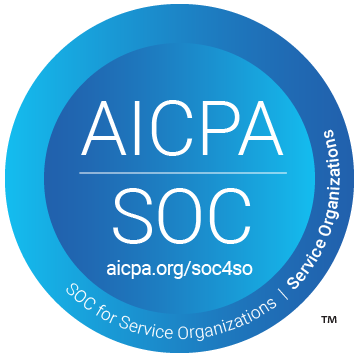When beginning a project, task, or activity, you have an end goal in mind. While the goal is clear, there’s a long road between the initial idea and the end result. The same goes for building and executing a direct mail marketing campaign. You have a goal to acquire new customers. You plan the audience, the channel, the artwork, and other key components before going ahead. But, when the time comes to sit back and measure your results, what are you actually doing to track your direct mail campaigns?
This question around direct mail analytics and tracking often arises during discussions with clients – mainly on marketing campaign performance, trackability, and lead gen potential. In many cases, elements like artwork, format, and target audience are prioritized over the call-to-action (CTA) or measurement of response. While it is important to establish success indicators for the campaign, it’s equally crucial to determine how they will be captured.
In this article, we’ll explore five key methods for tracking direct mail campaign responses. Before we dive in, a word about CTAs…
Leveraging your Call-to-Action & Offer
One effective way to capture information is by leveraging the Call-to-Action (CTA) and offer that appears on the mail piece to encourage consumer engagement. The CTA is the desired end goal, like “Shop with Savings” or “Call Today!”. The offer, on the other hand, serves as the hook and tracking mechanism.
If you’re offering 50% off a first-month membership but fail to indicate where or how the consumer can activate that offer, you’ve created a poor user experience and have no way of measuring response. All of your planning and budget could be wasted without a clear way to attribute results.

This is where a relevant CTA and offer can guide consumers and provide you with measurable results that will guide your direct mail analytics and tracking.
1 – Unique URLs for Website Traffic Attribution
Utilizing a unique URL for the campaign provides a real-time view of traffic to your website. This uptick in traffic can be attributed directly to recipients of the direct marketing piece.
Unique URLs offer insight into top-of-funnel activity. To ensure effectiveness, the URL should be short, memorable, and easy to type. Incorporating words like “save” or “offer” helps emphasize the intended promotion.
However, it’s important to recognize that consumers may not always use the unique URL as intended. Instead, they may go directly to the homepage. If a unique URL is critical for measuring response, make it clear on the mail piece that the offer is only accessible through that specific URL.
2 – Offer Codes
If you’re including an offer, a unique offer code can provide trackable, campaign-specific results. Offer codes can be assigned to individual recipients or used for the entire campaign.
Providing a campaign-specific offer (rather than one that’s widely available on your website) enhances the consumer’s perceived value and makes it easier to attribute responses.
It’s essential to avoid “over-promotion.” If your website is already flooded with offers, an additional offer from your direct mail campaign may lack impact. To avoid this, maintain a promotional calendar to coordinate your marketing efforts across multiple channels. This strategy ensures that offers remain exclusive and compelling.
3 – QR Codes to Track Direct Mail Campaigns
QR codes are nowadays a staple in marketing, often seen in restaurants, event centers, and more. These codes are unique and trackable, allowing you to measure engagement and response rates. Since users can scan a QR code with their smartphone camera, they’re more likely to interact with it compared to manually typing in a URL.
To make a QR code effective, think of it as an experience. Provide clear, enticing messaging about what the user will receive upon scanning it. If the QR code simply directs them to your homepage, they may be disappointed. Instead, highlight the benefit they’ll gain by scanning the code, whether it’s access to a special offer, exclusive content, or a time-sensitive deal.
4 – Trackable Phone Numbers
For companies that rely on inbound calls, a dedicated phone number for the direct mail campaign can provide valuable tracking insights and streamline your direct mail analytics.
A campaign-specific phone number allows you to attribute incoming calls to the specific marketing piece that prompted the call. This approach can also enhance the customer experience, as call center representatives will know which campaign the caller is responding to.
However, consumer behavior is shifting. People are becoming more averse to phone calls. If your campaign’s response rates are low, it may be time to test other response methods like QR codes, URLs, or text-based CTAs. Multiple CTAs can also be tested to determine the preferred engagement method of your audience – this is better done if backed up by great consumer data.
5 – Post-Campaign Matchback
Speedeon’s post-campaign matchback reporting provides a final, holistic layer of direct marketing analytics. This process involves comparing your customer file against the direct mail file to identify who responded to the campaign, even if they didn’t follow the designated tracking path.
Post-campaign matchback analysis provides deeper insight into customer behavior and the effectiveness of your mailings.
This approach also enables you to evaluate “control” or “holdout” groups.
By tracking the actions of people who didn’t receive the mail piece, you can gauge the true impact of your campaign. For example, did the people who weren’t mailed still convert at the same rate as those who were? Understanding these insights can inform future campaign decisions and budget allocations.
Expanding Direct Mail Tracking Capabilities
In addition to these five tracking methods, marketers can employ other strategies to gain deeper insights into campaign performance. Here are a few additional techniques to consider:
Personalized Landing Pages (PURLS)
Instead of a generic unique URL, create personalized landing pages with content tailored to the recipient. These pages can include the recipient’s name, location, or specific offers, making the experience feel more relevant and engaging. This is a growing trend, but it needs to be done very thoughtfully, otherwise, you may scare your audience!
A/B Testing
Split testing different elements of the direct mail piece, such as the design, CTA, or offer, allows you to see which version drives higher engagement. A/B testing helps refine future campaigns and ensures you’re using the most effective tactics.
Response Rate Benchmarks
Establish response rate benchmarks and key performance indicators for your campaigns. Knowing the industry average or your previous campaign’s performance can help set realistic goals and measure success more effectively.
We Can Help You Track Your Direct Mail Campaigns
Proper tracking and post-campaign analysis ensure that you can fully measure the impact of your efforts.
By employing multiple tracking methods — like unique URLs, offer codes, QR codes, campaign-specific phone numbers, and post-campaign matchback analysis — you’ll have a comprehensive view of consumer behavior and campaign performance.
If you need assistance to run your next direct mail campaign, we are here for you. Setting up direct mail analytics and combining all the elements of a campaign can be confusing if data tracking is not within your expertise – which, we get it… so this is where we come in!
>> Book a strategy call with a data expert here! <<
Let’s talk tracking, conversions, and mail marketing success!

